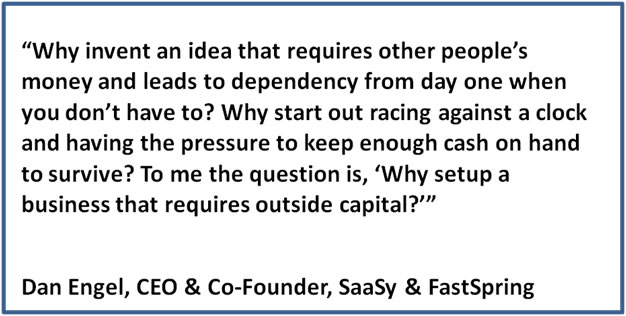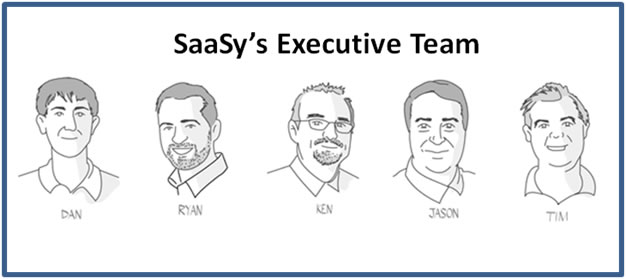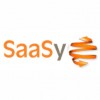
 Messenger: Dan Engel, Co-Founder and CEO, SaaSy, Co-Founder and CEO, FastSpring, former Marketing Manager at Google, VP of Market Development at Picasa
Messenger: Dan Engel, Co-Founder and CEO, SaaSy, Co-Founder and CEO, FastSpring, former Marketing Manager at Google, VP of Market Development at Picasa
Value Prop Twitter Style: SaaSy is: “the 1st all-in-one payment & subscription management service designed for SaaS, Web service, & Web 2.0 companies”
If you haven't already subscribed yet, subscribe now for
free weekly Infochachkie articles!
10) Dan, why does the world need SaaSy?
“Up until now, if you wanted to sell a subscription-based web service, you had to invest *years* into building, improving on, and maintaining your own subscription e-commerce infrastructure either from scratch or by building tons of functionality around a basic recurring billing service. Thanks to SaaSy, companies can now outsource practically everything to us instead of building complex subscription management and payment infrastructure, leaving firms to focus on growing their company as fast as possible.”
9) You have done an incredible job of providing world-class customer service, yet your company is highly virtual. How have you balanced the management of a geographically disparate workforce with high-quality service?
“Ah. It is precisely that structure that has been one of the key reasons why we have been able to “wow” clients and their end users so successfully over the past few years. Some have told us their customer service experience with us is the best they’ve had in their entire lives, which is pretty cool. If our team worked together in a single office everyday in one geo location as opposed to working from home all over the US, I don’t see how clients and their customers would be responded to within 1-2 hours practically 24/7/365, be it at 11pm on a Saturday night or on Christmas. Our team is a little unusual when it comes to their passion for computers in general and how it plays out in our customer service. You’re talking about people who sleep with their laptops in bed, some who would rather spend Christmas with their PC than with a room full of loud relatives.”
8 ) To what extent do your experiences at FastSpring give you an unfair advantage when it comes to launching SaaSy?
“Hey, I like how that question starts. Indeed we do have a major advantage. Most recurring billing services are founded by folks from the billing industry, whereas SaaSy is built by the people who pioneered e-commerce infrastructure for software companies starting in the 90’s (1990’s, not in our 90’s, though some of us do have grey hair for that it’s worth). More importantly, before we ever started on SaaSy, we had a successful (#41 on Inc. 500 in 2010) all-in-one service for one-time purchase-based software products, so all we had to do was add the SaaS/subscription pieces, and our functionality from day one blew away the basic functionality of the recurring billing services.”
7) The SaaS world has changed tremendously from 2001 when you and I were marketing GoToMyPC. Technology has made launching a SaaS offering far less expensive. However, the changing economics have also lowered the barriers of entry for all comers. What is your advice for budding SaaS entrepreneurs who are seeking to establish and maintain a competitive advantage?
“Well, call me biased, but I can’t think of better advice than to setup your company to be able to get and stay ahead of the competition by having the ability to focus on what you should be focusing on – product development and marketing and sales (yes, not spending years building out a payment and subscription management infrastructure when you no longer have to). If time to market and staying ahead matter, use SaaSy and let your competitors misspend their first few precious years while you’re flying.”
6) Imagine you are writing a TechCrunch article in five years describe why SaaSy failed. What issues would you cite in such an article and what are you doing to mitigate the impact of such potentially adverse factors?
“Failed? Hah. You’re good. Alright…we failed because we didn’t work/spend hard enough to get the message out quickly enough, because we let our competition catch up with too much of our functionality, because we didn’t listen well enough to our customers. OK, that last one would never happen, but let’s hope the first two don’t either.”

5) What marketing tools and technologies will help SaaS marketers succeed during the coming decade?
“SaaS marketers need to continue to focus on minimizing churn and maximizing customer lifetime value. One good way to address churn is to have phenomenal customer service that keeps customers wanting to stay with you forever. When it comes to maximizing customer lifetime value, SaaSy plays a large role there as well, providing SaaS marketers with marketing and merchandising tools, features, and services specifically for increasing order page conversion, average order values, and expanding market reach. Many of these marketing tools and features are listed at http://saasy.com/features.php”
4) You have tremendous momentum and clearly could have raised capital from a variety of sources, yet you have self-funded all of your startups. Why haven’t you brought in outside investors into any of your companies? Do you foresee any circumstances in which you might access venture capital?
“Outside capital just doesn’t feel natural or right to me as the way you should start a company; it drives different types of decisions and a different culture than bootstrapping. Most of the best companies in history were bootstrapped, and I think that’s for good reasons. Why invent an idea that requires other people’s money and leads to dependency from day one when you don’t have to? Why start out racing against a clock and having the pressure to keep enough cash on hand to survive? To me the question is, ‘Why setup a business that requires outside capital?’ Not enough entrepreneurs think this way, in my view.
In terms of where outside capital could make sense for us today, we do talk to firms here and there about a Founder’s sale whereby the Founders get to take some chips off the table while taking in some cash at the same time. Getting partial liquidity is sensible, as the end goal is to get full liquidity at a price that makes sense.”
3) If you could go back in time and change a decision in your past professional life, what decision would you change and why would you change it?
“These are great questions. You should have been looked at when Larry King got replaced. You don’t sound like you even would have a British accent, could be a big plus.
I would have worked harder to find more mentors. My dad isn’t an entrepreneur overall, we don’t have many in the family, and most of the guidance I get is from people who like me but only should care to an extent, and I could have used more involved mentorship over the years when it comes to entrepreneurship. There’s often a key mentor behind great entrepreneurs. Most people don’t realize how much information and money came inherited by Donald Trump, and he is soon going to be our President, a great example!”
2) You started your Internet career as a young man at Idealab. Although the pre-dot-bomb days were crazy, any there lessons from that time period that have served you well in your startups ?
“ I had a unique opportunity to be an Entrepreneur-in-Residence at Idealab, an incredible company (to this day), when I was 24. Some lessons that have proven valuable are that despite what one may think in the moment, it’s all about profit in the end; that ideas, good or bad, can end up working out in the end if you have the ability/luxury to revise them numerous times vs. running out of money; that if you can address the #1 reason businesses fail (they run out of cash) pretty well from the get-go (which is more doable than most people realize, and is more about model and approach than requiring outside capital), then your odds for success are a bazillion times higher.”
1) What are the characteristics of the ideal SaaSy customer and what is the best way for them to learn more about your offering?
“Funny you should ask. The best way to learn more is by visiting www.SaaSy.com. Or, I suppose those who prefer to learn things in life via TechCrunch can check out their coverage at: http://tinyurl.com/4vagyvf
The ideal SaaSy customer is a company with an existing subscription-based online service or that is planning to launch a new subscription service and who would rather spend the next few years growing their company, rather than developing a new or trying to add on to an existing e-commerce infrastructure.”
Liftoff: Rapid fire answers to various irrelevant questions:
Hiking or running? “Running faster than my competition.”
Would you rather be eight foot tall or run 50-miles per hour? “I’d like to move fast enough not to waste time.”
Fat or bald? “Bald is so much healthier. Easy one.”
Gmail or Outlook? “Outlook, though that doesn’t mean it doesn’t suck.”
Snow or water skiing? “Water, the views exclude countless layers of clothing.”
______________________
John Greathouse has held a number of senior executive positions with successful startups during the past fifteen years, spearheading transactions which generated more than $350 million of shareholder value, including an IPO and a multi-hundred-million-dollar acquisition.
John is a CPA and holds an M.B.A. from the Wharton School. He is a member of the University of California at Santa Barbara’s Faculty where he teaches several entrepreneurial courses.
______________________
Copyright © 2007-11 by J. Meredith Publishing. All rights reserved.




